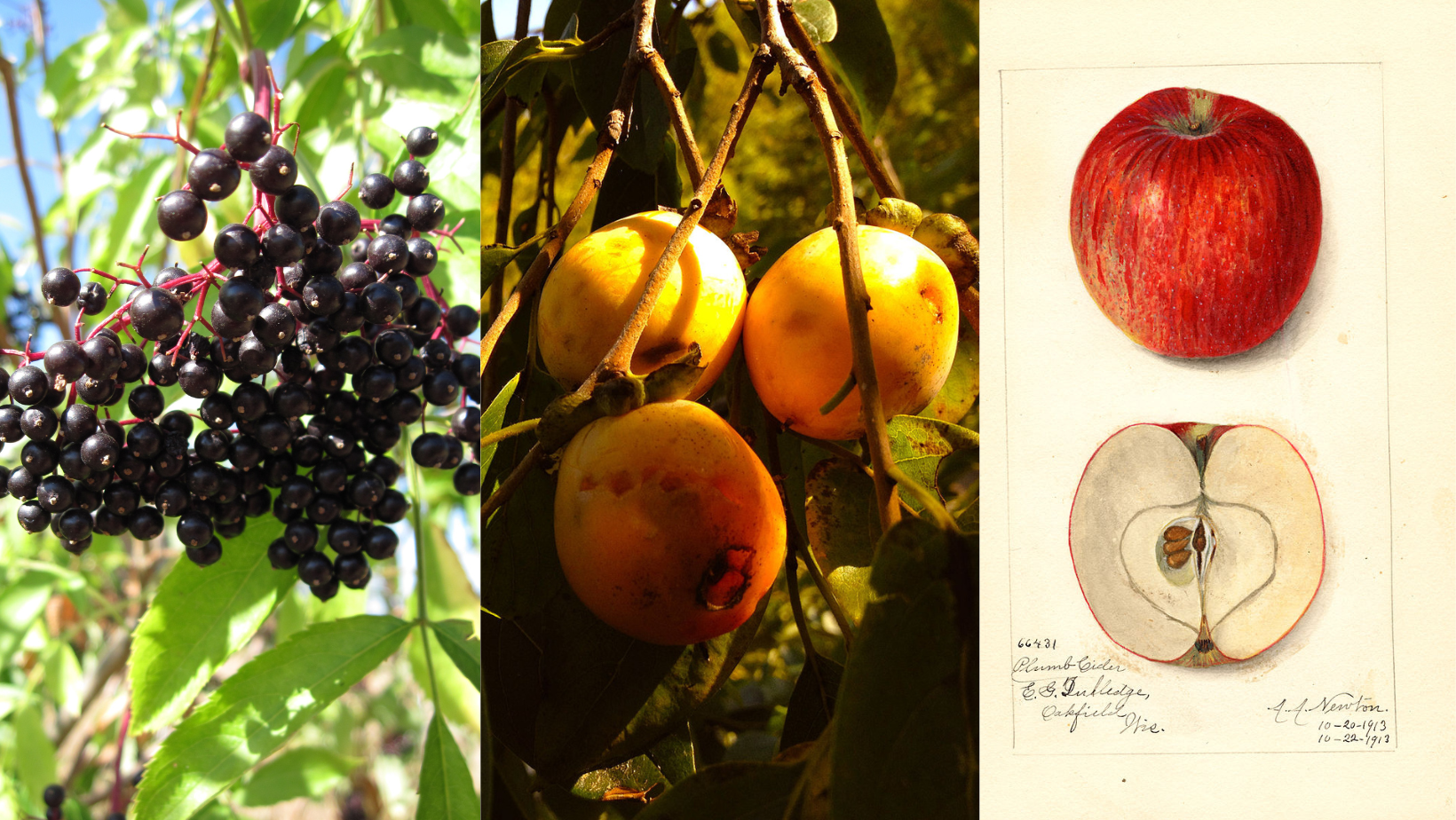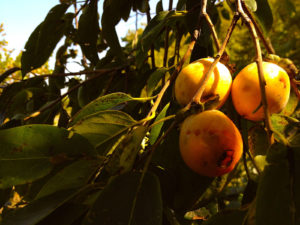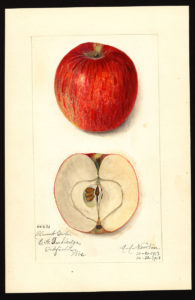By Makiah Josephson, Slow Food USA Communications Coordinator

Did you know that there are more than 2,000 fruit varieties in North America? These fruit varieties are far more abundant than what we encounter at our local supermarkets, and many regions like the American Midwest are perfect examples of land with plentiful and diverse fruit trees providing delicious and unique fruit.
Unfortunately, many American fruit varieties are endangered, and the three fruits discussed below are only a few of the many in need of preservation. That’s where the Ark of Taste comes in: it’s a catalog of fruits and other endangered foods that share a rich heritage and contribute to many delectable, iconic and culturally critical dishes. “The Ark of Taste is an invitation to engage with the biodiversity around you, to learn about and celebrate the distinctive plants, animals and foods that make up our diets and identities,” stated Slow Food USA Director of Programs Mara Welton. This extensive catalog is operated through volunteer regional committees, whose members nominate foods from their part of the country and work to preserve them. The Ark of Taste is an international effort to preserve and restore endangered foods all over the world. “This catalog is an important ally as communities experience climate uncertainty — the Ark of Taste is a starting place that can give us a window into the resiliency that is possible when we embrace biodiversity,” noted Mara.
The American Black Elderberry, American Wild Persimmon, and Plumb Cider Apple are three Midwestern heritage fruits included on the North America Ark of Taste catalog. These tasty fruits are must-try foods to find on your next trip to the Midwest!
American Black Elderberry
 This aromatic and sweet berry is mostly found along roadside ditches and streams. They have a slightly bitter taste and are native to all but seven states in the US. Elderflowers have a lovely fragrance and delicate flavor that was traditionally used to make juices, wines, syrups, jellies and jams. Elderberries have become more popular in grocery products and modern recipes. Historically, many Native American tribes used every part of the plant to consume, craft tools and make medicines. The popularity has resurged in recent years in home gardens and with foragers. With the growth in popularity, there is a good chance that in several years there will be more access to the raw fruit for more people to enjoy. The one thing to keep in mind when consuming these berries is to cook them; this helps avoid any risk of poisoning or an upset stomach.
This aromatic and sweet berry is mostly found along roadside ditches and streams. They have a slightly bitter taste and are native to all but seven states in the US. Elderflowers have a lovely fragrance and delicate flavor that was traditionally used to make juices, wines, syrups, jellies and jams. Elderberries have become more popular in grocery products and modern recipes. Historically, many Native American tribes used every part of the plant to consume, craft tools and make medicines. The popularity has resurged in recent years in home gardens and with foragers. With the growth in popularity, there is a good chance that in several years there will be more access to the raw fruit for more people to enjoy. The one thing to keep in mind when consuming these berries is to cook them; this helps avoid any risk of poisoning or an upset stomach.
American Wild Persimmon
 This distinctively American fruit was commonly used by Native Americans, African Americans and early European settlers in recipes from their respective cultures. Its sweet and chewy consistency is similar to dates and can be used in both sweet and savory dishes. They have a stunning flavor that is rich and complex; a perfectly ripe persimmon can taste like caramel and have notes of tangerine flavors. Historically, it was a valuable winter food source because of its high nutritional value and versatility. Its fruit is easily available and can fall directly in your hands when you shake a ripe tree. Permission groves are in danger because their wood is highly sought after for textile shuttles, pool cues and golf clubs. Some nurseries are increasing their stock of persimmon trees and helping preserve and grow interest in the versatile fruit.
This distinctively American fruit was commonly used by Native Americans, African Americans and early European settlers in recipes from their respective cultures. Its sweet and chewy consistency is similar to dates and can be used in both sweet and savory dishes. They have a stunning flavor that is rich and complex; a perfectly ripe persimmon can taste like caramel and have notes of tangerine flavors. Historically, it was a valuable winter food source because of its high nutritional value and versatility. Its fruit is easily available and can fall directly in your hands when you shake a ripe tree. Permission groves are in danger because their wood is highly sought after for textile shuttles, pool cues and golf clubs. Some nurseries are increasing their stock of persimmon trees and helping preserve and grow interest in the versatile fruit.
Plumb Cider Apple
 The tender and juicy plumb cider apple variety was so popular that it became a standard variety at state fairs in the late 1800s and early 1900s. It has a pale red color with yellow tones. With its subtle taste and smell it was historically used for making cider. In the 1920s, the plumb cider apple unpredictably lost popularity and started disappearing from nursery catalogs. It was rediscovered by an apple historian named Dan Bussey in 1989. Since then it has only been in the hands of a few collectors and sadly there are only a few bearing trees commercially existing. It is currently a rare variety and in need of cultivation and preservation.
The tender and juicy plumb cider apple variety was so popular that it became a standard variety at state fairs in the late 1800s and early 1900s. It has a pale red color with yellow tones. With its subtle taste and smell it was historically used for making cider. In the 1920s, the plumb cider apple unpredictably lost popularity and started disappearing from nursery catalogs. It was rediscovered by an apple historian named Dan Bussey in 1989. Since then it has only been in the hands of a few collectors and sadly there are only a few bearing trees commercially existing. It is currently a rare variety and in need of cultivation and preservation.
To find out more about these fruit varieties and other US-based endangered foods, make sure to check out the Ark of Taste catalog!


Every now and then I taste a fruit growing wild, indigenous to a specific area. Off hand, recall a persimmon in the Ozarks and black berries in upper Manhattan! It is always a revelation, maybe because it is outside, maybe because it is so fresh. But maybe I am encountering an endangered heritage fruit. I can attest to the fact that they are worth saving!